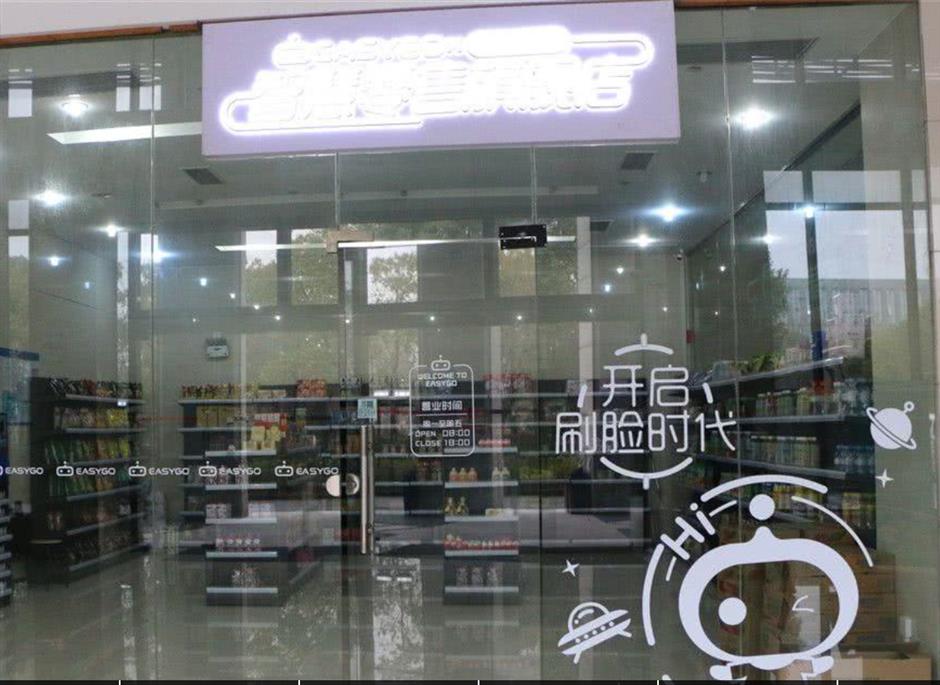Buying a snack with your face: Do we really need all this technology?
This week I ventured to the wilderness that is Jiading District to try out a Shanghai first: buying a snack using only my face. You might be thinking, “You’re pretty average looking, Andy, how’s that going to work?” Well, it’s more to do with facial recognition technology than batting my gorgeous green eyes to full effect, and I was keen to see how it all worked.
If there’s one thing we all know about China, it’s that digital payment methods here that are leaps and bounds ahead of much of the rest of the world in terms of ease of use, convenience and accessibility. If I’m being honest, I don’t need much more from WeChat or Alipay when it comes to speed and ease of payment (they could fix that pesky issue stopping foreigners paying for things overseas, though).
That’s why I was a little underwhelmed at the idea of driving an hour from work — 25 kilometers — to the northwest district of Jiading to try out a first-of-its-kind convenience store which apparently has no staff and accepts digital payment using facial recognition technology.
The EasyGo unattended, smart convenience store chain began in June of 2017. There are now more than 100 outlets in 13 cities across China, apparently. For some reason they chose out-of-the-way Jiading District for their first Shanghai store.
When I first arrived, I was a bit confused to find the door locked, despite the lights being on and a sign with the business hours (Monday to Friday, 8am-4pm) showing I was neither early nor late. A few minutes later a woman hurried back and unlocked the door. She was in the toilet. I thought the concept of the store was that it was unattended?
I was initially struck by just how small the store was, and how bare the shelves were. I couldn’t find anything I actually wanted to buy, but the whole point was to test out this fandangled new payment method. I grabbed a packet of potato chips that looked okay and headed for the two payment booths near the door.
After scanning my chippies, the machine scanned my face and then almost instantly digitized my features into whatever algorithm it uses to find a single identity from a database of millions. It asked me to enter the phone number associated with my WeChat (the only payment method accepted in the store).
“The current WeChat account holder’s real-name ID is not a Chinese mainland ID card. Please pay directly using WeChat.”
So, after all that, it wasn’t possible to use this fancy new technology we had driven one hour to experience. Sophie, my colleague, came to the rescue and bought the chippies using her face just so I could experience the situation vicariously. I ate the chippies by myself, as a kind of protest. I guess you could say the situation left a bitter taste in my mouth, and I wondered if it was really all worth it.
Now, I know facial recognition technology has many, many important uses and functions in the world — that’s why tech companies in Shanghai and across China are putting so much effort into developing and perfecting it. It can protect your privacy, make sure college students don’t cut class, diagnose rare diseases, tag pictures of you on Facebook, catch criminals and make sure those in control of trains, planes and automobiles are awake and alert.
I remember when I was covering the international import expo last year, facial recognition technology identified my face within seconds every time I approached security checks, and officers on guard let me through without even having to slow my pace. That was great use, both for security and time saving.
I just don’t know if we need to put such great technology to work where it’s not really needed. Making payments in China’s convenience stores today takes a two-second scan of a QR code on your phone. It’s super fast, easy and painless.
Using facial recognition technology at EasyGo, on the other hand, requires you to scan the items yourself, scan your face, and then type your phone number connected with your WeChat account into the machine to verify your face has matched up correctly. Sure, it’s not that arduous, but do we really need to reinvent the wheel?
I’ll go out on a limb here and say projects like this are just gimmicks, sideshows to the main event. It worked, I guess — we drove all the way to Jiading to check it out, and now I’m writing about it. I can’t say I see facial recognition payments taking off in any big way, but then I thought 3D movies would disappear years ago, too.

A 24-hour smart convenience store is seen in Guangzhou City.

The EasyGo smart convenience store in Shanghai’s Jiading District.















